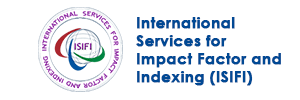
Journal Basic Info
**Impact Factor calculated based on Google Scholar Citations. Please contact us for any more details.Major Scope
- Blood Cancer
- Prostate Cancer
- Head and Neck Oncology
- Palliative Care
- Colorectal Cancer
- Chemoprevention
- Sarcomas
- Immunology
Abstract
Citation: Clin Oncol. 2023;8(1):2010.DOI: 10.25107/2474-1663.2010
A Cuproptosis-Related lncRNAs Risk Model to Predict Prognosis and Immune Characteristics in Breast Cancer
Xu XY, Song YH, Liu XQ and Lin XY
Department of Pathology, Shandong Provincial Hospital, Shandong First Medical University, China
College of Basic Medicine, Shandong First Medical University-Shandong Academy of Medical Sciences, China
Department of Pulmonary and Critical Care Medicine, Shandong Second Provincial General Hospital, Shandong University, China
Department of Pathology, Shandong Provincial Hospital, Shandong University, China
Department of Breast Disease Diagnosis and Treatment Center, Central Hospital, Shandong First Medical University, China
These authors are contributed equally to this work
*Correspondance to: Xianqiang Liu
PDF Full Text Research Article | Open Access
Abstract:
Background: Cuproptosis (copper death) is a newly-rising research field in cell death, which is not completely elucidated when it comes to bioinformatics studies of Breast Cancer (BRCA). In this study, we aimed to discover cuproptosis-Related Long noncoding RNA (CRLs) and construct a prognostic risk model, particularly related to the immune characteristics with the goal of providing potential therapeutic guidelines for clinical treatment. Methods: Based on the cancer genome Atlas-BRCA transcriptome data, top five CRLs were screened, and Pearson's correlation was used to identify CRLs. Then we applied least absolute shrink age and selection operator Cox regression, and univariate Cox analysis to construct a prognostic risk model. Additionally, immune cells and immune checkpoints between risk groups were identified using the CIBERSORT. Finally, five CRLs were identified as the ultimate prognostic factors using the quantitative Reverse Transcription-Polymerase Chain Reaction (qRT-PCR) method. Results: The risk score and age can act as independent diagnostic factors in the prognostic risk model with a shorter overall survival time detected in the high-risk group. Immune cells and immune checkpoints between high- and low-risk groups showed a significant difference. Finally, we observed that AC092718.4 expression in three cell lines and clinical tissues was up-regulated, while AL050343.1, AL590434.1, AC105398.1 and AP001021.1 expression were down-regulated. Conclusion: The five prognostic CRLs have the potential to forecast prognosis and promote clinical drug selection, providing a theoretical foundation for clinical treatment.
Keywords:
Bioinformatics analysis; Breast cancer; Cuproptosis-related lncRNA; Risk model; Prognosis; Immune microenvironment
Cite the Article:
Xu XY, Song YH, Liu XQ, Lin XY. A Cuproptosis-Related lncRNAs Risk Model to Predict Prognosis and Immune Characteristics in Breast Cancer. Clin Oncol. 2023;8:2010..













